Fourteen projects are available for students to choose from, covering a wide variety of research in physics, astronomy and optics. The details of each project may vary from what is described below, as projects are continually evolving. The below descriptions for each project include a research overview for the mentor, a description of the REU project, and details of what the student will do and how the student will be supervised.
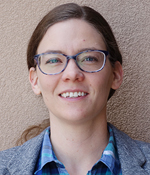 Research overview: The cosmic microwave background (CMB) is the remnant radiation from the Big Bang. It has helped us understand the origins and composition of our Universe since its accidental discovery by Penzias and Wilson in 1964. The latest challenge is precisely characterizing the polarization of the CMB, which will give further insight into inflation and the large scale structure of the universe. Measuring these faint signals requires large arrays of superconducting detectors, cooled to 0.1 Kelvin.
Research overview: The cosmic microwave background (CMB) is the remnant radiation from the Big Bang. It has helped us understand the origins and composition of our Universe since its accidental discovery by Penzias and Wilson in 1964. The latest challenge is precisely characterizing the polarization of the CMB, which will give further insight into inflation and the large scale structure of the universe. Measuring these faint signals requires large arrays of superconducting detectors, cooled to 0.1 Kelvin.
Our group is involved in both analyzing data from current measurements from the POLARBEAR project, as well as testing devices and technologies for future telescopes with improved sensitivity.
Project for REU student: Potential summer research projects would be related to the characterization and testing of superconducting devices and technologies for CMB telescopes, using a dilution refrigerator cryostat.
What the student will do: The student will first gain a background in basic cryogenic principles and techniques, necessary to successfully cool samples to sub-Kelvin temperatures. They will learn about our custom electronics and specialized read out systems, including SQUID amplifiers and superconducting transition-edge bolometers. All of our control and analysis code is written collaboratively in Python, with many opportunities to learn and develop new programs. After learning the basic skills, the student should be able to independently take measurements and perform basic data analysis. Depending on the student’s skills and interests, they can further develop skills in electronics, machining, programming, and data analysis.
Supervision: The student will work in the lab with Dr. Barron and her students, and will attend weekly group meetings. They will also have the opportunity to collaborate and communicate with students at other institutions.
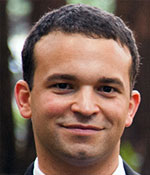 Research Overview. Acosta's research lies at the intersection of condensed-matter physics, quantum optics, and biomedical imaging. The lab specializes in using color centers in diamond as quantum sensors to study nanoscale magnetic phenomena in physical, chemical, and biological systems. They are also developing nanophotonic surfaces for applications ranging from few-photon optical logic to virtual reality. The lab currently is comprised of 7 graduate students and two postdocs and is funded by NSF, NIH, DOE, Google, and several private foundations.
Research Overview. Acosta's research lies at the intersection of condensed-matter physics, quantum optics, and biomedical imaging. The lab specializes in using color centers in diamond as quantum sensors to study nanoscale magnetic phenomena in physical, chemical, and biological systems. They are also developing nanophotonic surfaces for applications ranging from few-photon optical logic to virtual reality. The lab currently is comprised of 7 graduate students and two postdocs and is funded by NSF, NIH, DOE, Google, and several private foundations.
REU Project. The student will work on an ongoing quantum optics project aimed at demonstrating all-optical logic circuits operating near fundamental quantum limits, the few-photon level. The building block for these circuits is based on nonlinear optical addressing of Silicon-Vacancy centers coupled to nanophotonic cavities. These experiments present a number of impressive spectroscopy and nanofabrication challenges, which make for an exciting learning opportunity for an undergraduate student working within a broader team.
What the Student Will Do. The student will develop spectroscopy (e.g. Fabry-Perot interferometer) and imaging (e.g. confocal microscope) tools to characterize the properties of ensembles of Silicon-Vacancy centers coupled to nanophotonic cavities. Together with two graduate students, they will use this knowledge to optimize the performance of all-optical switches operating at the few-photon level. The student will gain experience in nonlinear and quantum optics theory, optical breadboarding, experimental control (LabVIEW), data analysis (Mathematica, MatLab, and/or Python), and communicating results (presentations at group meetings). The student will present their work at an external conference and may be involved as a co-author in a subsequent journal publication.
Supervision. The student will be supervised through weekly 1:1 meetings as well as daily interactions in the lab with Acosta. They will also work closely with two graduate students working on the project.
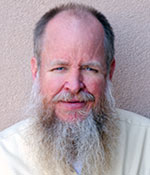 Research Overview. Ion source research involves a wide range of studies in both fundamental and applied physics. Fundamental studies focus on surface physics, materials science, plasma physics, and thin film phenomena. Applied studies are in the areas of ion sources for lithography, microscopy, neutron generators, and medical proton therapy treatment systems. In the past decade, six undergraduates have been mentored with one staying on to complete a graduate degree.
Research Overview. Ion source research involves a wide range of studies in both fundamental and applied physics. Fundamental studies focus on surface physics, materials science, plasma physics, and thin film phenomena. Applied studies are in the areas of ion sources for lithography, microscopy, neutron generators, and medical proton therapy treatment systems. In the past decade, six undergraduates have been mentored with one staying on to complete a graduate degree.
Project for REU student. The student would work on an ongoing DARPA-funded effort to develop deuteron sources for electronic neutron generators.
What the Student Will Do. The student will assist Prof. Schwoebel in upgrading a time-of-flight mass analysis system to higher resolution. The student will be exposed to ultra-high vacuum technology, mass spectrometry, and nuclear instrumentation while participating in testing of the upgraded system. Direct practical laboratory experience will be gained in electronics and machine shop practices, including circuit breadboarding, electronics assembly and soldering, drawing of schematic diagrams and use of basic machine tools.
Supervision. The student will work under the direct supervision of Prof. Schwoebel.
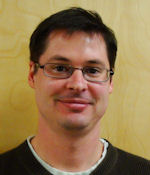 Research Overview. Prof. Lidke's primary area of research is single molecule fluorescence microscopy for biological imaging. This includes techniques such as single particle tracking, super-resolution and hyperspectral imaging. The lab is currently funded by an NSF CAREER award to Lidke as well as several NIH grants. In addition, Lidke is one of the leaders for the ‘The New Mexico Center for the Spatiotemporal Modeling of Cell Signaling (STMC),' an NIH center for systems biology, and he directs its ‘Super-Resolution Microscopy Core'. The biological focus for many of these projects is observing and measuring kinetic parameters of interacting of proteins in live cells as well as their spatial distributions. The Lidke lab is a very active environment that typically employs a staff scientist, two post-docs, two to three graduate students and one or two undergraduate students. Since arriving at UNM in 2007, Lidke has given research opportunities to seven undergraduates whose majors include physics, biology, chemistry, and biochemistry. Two undergraduates have been included in published work. A third is currently preparing a first-author manuscript.
Research Overview. Prof. Lidke's primary area of research is single molecule fluorescence microscopy for biological imaging. This includes techniques such as single particle tracking, super-resolution and hyperspectral imaging. The lab is currently funded by an NSF CAREER award to Lidke as well as several NIH grants. In addition, Lidke is one of the leaders for the ‘The New Mexico Center for the Spatiotemporal Modeling of Cell Signaling (STMC),' an NIH center for systems biology, and he directs its ‘Super-Resolution Microscopy Core'. The biological focus for many of these projects is observing and measuring kinetic parameters of interacting of proteins in live cells as well as their spatial distributions. The Lidke lab is a very active environment that typically employs a staff scientist, two post-docs, two to three graduate students and one or two undergraduate students. Since arriving at UNM in 2007, Lidke has given research opportunities to seven undergraduates whose majors include physics, biology, chemistry, and biochemistry. Two undergraduates have been included in published work. A third is currently preparing a first-author manuscript.
Project for REU student. An REU student will be integrated into ongoing research projects and will be allowed to develop a research area that could help to advance the aims of these projects. Projects include: exploring the precision limits of 3D single molecule localization; using imaging data to build or fit physical models of biological structures such as microtubules or membranes; developing and constructing a microscopy or spectroscopy setup.
What the Student Will Do. In addition to topic-specific aspects of his/her chosen research project, the student will learn to use the fluorescent microscope and become competent if not proficient in programming using MATLAB.
Supervision. The student will be guided by daily meetings with Lidke and will be directly supervised by a graduate student or post-doc involved in the project. The student will attend regular lab meetings.
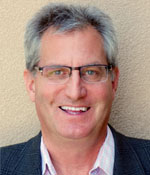 Research Overview. This project is a combination of experiment and computer simulation to improve methods for measuring the interactions of membrane receptors. Experimental work is based on fluorescence fluctuation analysis, using a two-channel fluorescence correlation microscope. Two physics majors have recently done undergraduate honors research in the lab, and both have gone on to graduate study.
Research Overview. This project is a combination of experiment and computer simulation to improve methods for measuring the interactions of membrane receptors. Experimental work is based on fluorescence fluctuation analysis, using a two-channel fluorescence correlation microscope. Two physics majors have recently done undergraduate honors research in the lab, and both have gone on to graduate study.
REU Project. Receptor Dynamics on Cell Membranes. A substantial library of MATLAB subroutines has been written to simulate diffusion and reaction of membrane proteins, including the effects of photobleaching.
What The Student Will Do. The student will use these routines on the supercomputer cluster at the Center for Advanced Research Computing (CARC) at UNM to simulate different measurement protocols to determine which are most effective at determining protein subunit dimerization with least systematic error from photobleaching. Different measurement protocols include:
The student will gain an understanding of random walks and how diffusion and reaction can be modeled in both lattice and lattice-free simulations.
Supervision. The student will work under the direct supervision of Prof. Thomas for the entire 10-week period.
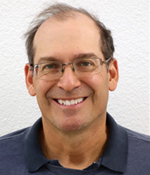 Research Overview. The Long Wavelength Array project is run out of the Physics and Astronomy Dept. at UNM and is currently supported by three NSF grants (with others pending) and the AFRL. The major goals of the project are
Research Overview. The Long Wavelength Array project is run out of the Physics and Astronomy Dept. at UNM and is currently supported by three NSF grants (with others pending) and the AFRL. The major goals of the project are
Undergraduates currently take care of much of the operations: they learn how the array works, and they are responsible for scheduling observations and monitoring the array in a linux-based environment. They also work with one of the LWA staff (comprised of two regular faculty, one research faculty, two postdocs, and several graduate students) on an LWA project so that they have a chance to work with real data, learn analysis techniques and learn how to present their results. Interaction with collaborators at LANL, Caltech, JPL, NRL and Harvard broadens the cross-disciplinary experience of the students. Six of Prof. Taylor's past undergraduates have first-authored a paper, and two others have co-authored papers.
REU Projects. Available research projects concern new pulsar, transient, and AGN science opened up by the LWA.
What the Student Will Do. The student will learn to operate the array and participate in a project, with the goal of contributing to a publication. The student will gain all the aforementioned skills and will interact with other undergraduates and the LWA staff.
Supervision. A dedicated staff member will directly supervise the student, who will also interact frequently with Prof. Taylor.
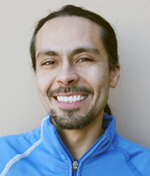 Research Overview. Prof. Becerra studies quantum properties of light and matter and their interaction, and methodologies for the determination of the quantum states of these physical systems via quantum tomography.
Research Overview. Prof. Becerra studies quantum properties of light and matter and their interaction, and methodologies for the determination of the quantum states of these physical systems via quantum tomography.
Project for REU student. Detection schemes to efficiently characterize photonic and atomic quantum states with high precision are being investigated. A compact optical coherent-detection setup for real-time data acquisition is being developed to study the statistical properties of light, which is necessary for homodyne tomography. This setup is essential for fundamental studies of entanglement transfer between single photons and complex collective atomic quantum states. The goal is to develop a homodyne optical setup to test the viability of implementing tomographic schemes in real time, and to identify the critical experimental parameters for homodyne tomographic reconstructions.
What the Student Will Do. The student will read literature about homodyne tomography and coherent detection. The student will characterize the efficiency and the noise properties of a low-noise differential detector, and create the optical setup for coherent homodyne detection. The student will also test the setup with coherent laser light and record data with fast acquisition systems (such as a digital-storage oscilloscope) for data processing. The student will learn about the basics of optics and electronics, homodyne detection, and characterization of states of light.
Supervision. The student will work under the direct supervision of Prof. Becerra and will interact with graduate students working in the laboratory.
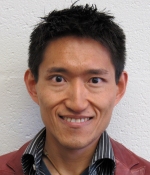 Research Overview. Theory of quantum information and computation, with a focus on quantum many-body systems and their relevance to quantum computation and thermodynamics. Partially funded by NSF. The mentor taught upper-division quantum mechanics twice successfully through the academic years 2013-2014, and is keen to bridge a gap between undergraduate materials and research frontiers.
Research Overview. Theory of quantum information and computation, with a focus on quantum many-body systems and their relevance to quantum computation and thermodynamics. Partially funded by NSF. The mentor taught upper-division quantum mechanics twice successfully through the academic years 2013-2014, and is keen to bridge a gap between undergraduate materials and research frontiers.
Project for REU student. The research of quantum computation keeps expanding and has recently cross-fertilized with other fields like quantum many-body physics and condensed matter physics. For instance, it is recently recognized that dynamics of quantum entanglement in many-body systems is deeply connected to thermalization of the systems, and experimental observations of such behaviors offer an interesting opportunity to revisit fundamental assumptions of thermodynamics.
What the Student Will Do. The student will first learn basic knowledge about entanglement and numerical simulation of 1D quantum systems by reading a couple of introductory papers. After the student learns how to use an open-source computer code to calculate time evolution of entanglement in terms of so-called matrix product states, the goal will be to explore connections to thermodynamics and many-body localization using the code. The project will enable the student to develop scientific skills needed to read articles analytically and use computer programs for numerical calculations, as well as providing a glimpse into a rapidly expanding frontier in contemporary physics.
Supervision. The student will be supervised by Prof. Miyake and graduate students from the department's Center for Quantum Information and Control.
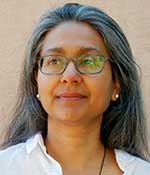 Research Overview. Prof. Roy's research focuses on modeling deformation in the crust and upper mantle. Continuum mechanics is used to understand the inflation/deflation of magma bodies, in addition to percolative transport of magma. The flow of a low-viscosity magma within a matrix of solid rock is relevant to the extraction of melt at volcanic systems on Earth and other terrestrial bodies. Roy is currently supported on a CSES grant from the LANL for this work and has a strong record of undergraduate research supervision. Two undergraduate majors have done Honors theses with Roy, and a third is currently working toward an Honors thesis. These theses are the basis of a publication with three undergraduate co-authors. Additionally, Roy has supervised undergraduate summer research through the NSF-funded IRIS internship program for seismology.
Research Overview. Prof. Roy's research focuses on modeling deformation in the crust and upper mantle. Continuum mechanics is used to understand the inflation/deflation of magma bodies, in addition to percolative transport of magma. The flow of a low-viscosity magma within a matrix of solid rock is relevant to the extraction of melt at volcanic systems on Earth and other terrestrial bodies. Roy is currently supported on a CSES grant from the LANL for this work and has a strong record of undergraduate research supervision. Two undergraduate majors have done Honors theses with Roy, and a third is currently working toward an Honors thesis. These theses are the basis of a publication with three undergraduate co-authors. Additionally, Roy has supervised undergraduate summer research through the NSF-funded IRIS internship program for seismology.
Project for REU student. The REU student will investigate the interaction of surface faults with inflation and deflation events within a magma body. Using a viscoelastic model for crustal deformation, the student will study how localized uplift above a magma body could cause stress-changes on upper crustal fault systems, potentially bringing them closer to failure.
What the Student Will Do. The student will first read relevant background papers. The work will be conducted using the open-source software package Pylith for modeling the deformation of viscoelastic media. The student will test the effect of periodic pressure variations in a buried magma-body on loading/unloading of stresses on a system of near-surface faults above and near the magma chamber. Model results will be compared to previously-acquired GPS data for deformation near the Socorro Magma Body in New Mexico – a classic example of a mid-crustal magma chamber. This work will likely lead to a student presentation at the annual AGU meeting and potentially a refereed publication. The student will gain skills in Python programming, working with GPS observations, and continuum mechanics.
Supervision. The student will meet twice a week with Prof. Roy and more often with other members of her group.